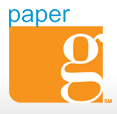 [Each week, our friend Ken Doctor — author of Newsonomics and longtime watcher of the business side of digital news — writes about the economics of the news business for the Lab.]
[Each week, our friend Ken Doctor — author of Newsonomics and longtime watcher of the business side of digital news — writes about the economics of the news business for the Lab.]
There are no new ideas in the digital business, just ones recycled from earlier dreams — ones that vaporware couldn’t make work, but newer technologies can.
Take business directories, for instance. The idea built huge Yellow Pages businesses, businesses now mature and, well, yellowing. You know you need a service — fix a broken water heater, a sore tooth, a cranky marriage — and you knew where to turn; let your analog fingers do the page-turning. Classic, order-taking annuity business. The web comes along and the Big Yellows, SuperPages and dozens of others — huge and small — take the print Yellow Pages business online. Of course, they struggle with the new medium, adding not much value, and usage is low; business growth is challenged. Angie’s List, Yelp and OpenTable come along, eating away the edges.
 Now we’re seeing a next generation, best symbolized by PaperG‘s new PlaceLocal product. In a nutshell, PlaceLocal creates instant ads for a business, drawn from the best of the available information out there on the web — photos, user reviews, basic address, phone, hours, menus.
Now we’re seeing a next generation, best symbolized by PaperG‘s new PlaceLocal product. In a nutshell, PlaceLocal creates instant ads for a business, drawn from the best of the available information out there on the web — photos, user reviews, basic address, phone, hours, menus.
It gives publishers — TimeOut, Hearst TV, and McClatchy are three of the first companies testing it — the ability to create ads on the fly, spec ’em out and use their sales staffs to do the selling. Victor Wong, one of the young geniuses behind the PaperG’s innovation — its first product, FlyerBoard, simply updated for the digital age the old notion of the ubiquitous kiosk flyers found around college campuses — tells me he thinks PlaceLocal will be a bigger product. It should sell for a higher rate, and that’s what his publisher customers are hoping. Initial rates — we’re talking about smaller businesses which aren’t frequent advertisers — run in the hundreds up to a thousand dollars monthly. That $1,000 target would more than double the pricing of the FlyerBoard product, a key in PaperG’s growth plan as the company of a dozen plus leaves the friendly confines of New Haven for Silicon Valley North, San Francisco.
Why a higher rate? Well, it’s potentially a highly actionable piece of commerce. As the commercial world moves increasingly beyond online display ads (a fairly static category of spending), beyond paid search (where almost half of today’s digital ad dollars are spent), to cost per call and various flavors of cost per acquisition, a PlaceLocal-kind of product — expect many knockoffs — is well-positioned.
One big lesson here for everyone to get their heads around. This is commercial crowdsourcing. Why outsource the collection, organization and checking of “directory data,” as numerous Yellow Pages companies have done over time, when you can have the crowd do it — for free. It’s using the web, as a whole, to find, value, and associate commercial content. We can see roots of Google PageRank, Demand Media content organization and Yelp user reviews in the thinking behind the product.
Newspaper companies have cut the cost of their ad production markedly over the last several years, as they’ve outsourced to companies like 2adpro, Affinity Express and Express KCS, with much of the work done in India. Those companies have made it possible for newspaper companies to cut their print (and increasingly online) ad production — often at union wage — costs by 40 percent or more. Now, a PaperG comes along, with a new kind of disintermediation notion, replacing that outsourcing with websourcing. Of course, we don’t yet have an apples-to-apples comparison of the advertising done the traditional way — asking a business what they want to sell and creating the ad from there — vs. the web-scraping PlaceLocal will test out. PaperG takes a revenue-share percentage of the ad sold, so publishers will have lots of comparisons to make on ad quality, ad effectiveness, net profit, and the ability to sell new customers.
My Newsonomics Law 9 — “Apply the 10-percent rule; the heavy lifting of journalism can be aided and abetted by smart use of technology” — comes into play here. Sometimes it takes 10 percent of the effort it used to to create news products — through smart aggregation, for instance. In this commercial case, we’re seeing a different twist on the 10-percent rule, and one that bears watching as city-based news and entertainment operations look for new revenue streams as the older ones morph rapidly.